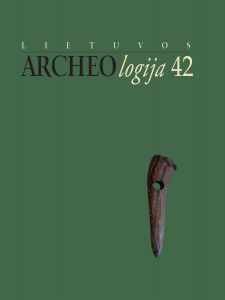Narkūnų piliakalnių ir papėdės gyvenvietės keramika: elgsenos atspindžiai
Pottery from Narkūnai Hillforts and foot settlement: some reflections on behaviour
Author(s): Vytenis Podėnas, Aleksiejus Luchtanas, Agnė ČivilytėSubject(s): Archaeology, Geomatics
Published by: Lietuvos istorijos institutas
Keywords: behavioural archaeology; pottery; spatial analysis; early hillforts;
Summary/Abstract: The article presents a classification of the pottery dated to PIII–B2 /C1 and a spatial analysis of the pottery, bone, and metal artefacts found at the Narkūnai archaeological complex (Utena District, Leliūnai Eldership). First, a re-examination of Narkūnai’s prehistoric chronology was made using typological studies. Second, on the basis of 14 879 analysed potsherds and 1534 separately examined rim sherds, pottery styles were distinguished in the context of the development of early hillforts’ pottery. Last, by applying a behavioural archaeology theory, the paper analyses the formation processes of the cultural layers and the fragment of the representativity of the archaeological context. A spatial analysis allowed the fragment of the 2nd century palaeorelief to be distinguished, the abandonment process of a single building to be examined, and four asynchronous metallurgical activity areas in the ‘Didysis’ Narkūnai Hillfort to be identified. The latter reflections on prehistoric behaviour are discussed in the context of the appearance and abandonment of the early hillforts and the relationship of the local communities with early metallurgy in the East Baltic region.
Journal: Lietuvos archeologija
- Issue Year: 2016
- Issue No: 42
- Page Range: 191-241
- Page Count: 51
- Language: Lithuanian

